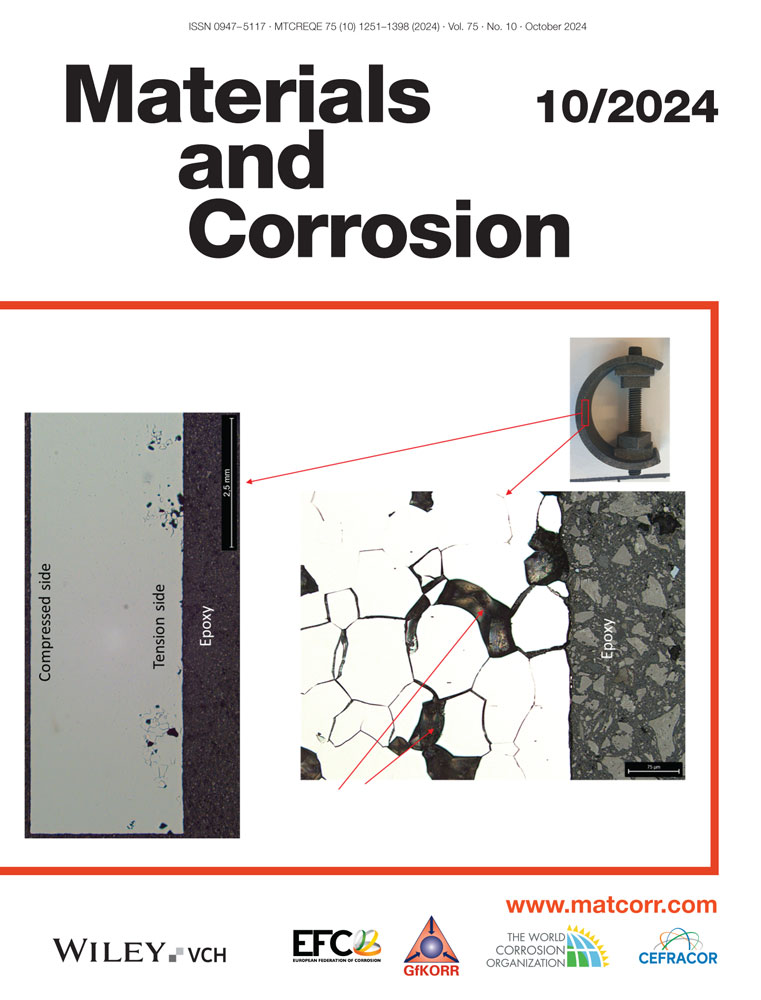Insight into the crevice corrosion mechanism of AA7075-T651 high-strength aluminum alloys in neutral nitrate solution: The effect of Cl−
Yuan Li and Yixin Tang contributed equally to this study.
Abstract
The crevice corrosion behavior and mechanism of AA7075-T651 aluminum alloy was investigated by electrochemical measurements and surface analysis technologies in a neutral nitrate solution with different contents of NaCl. The Cl− was identified as crucial for the initiation and development of the crevice corrosion, with the phenomenon absent in the 0.05 M NaCl solution but initiated in the 0.5 and 1 M NaCl solutions. However, the crevice corrosion was more pronounced in the 0.5 M NaCl solution due to the establishment of a larger galvanic corrosion effect. The rapid dissolution of the anodic phase resulted in the increased Cl− inside the crevice, while the cathodic phase enhanced the localized dissolution through micro-galvanic corrosion. This synergistic effect significantly facilitated the development of crevice corrosion.
CONFLICT OF INTEREST STATEMENT
The authors declare no conflict of interest.
Open Research
DATA AVAILABILITY STATEMENT
The data that support the findings of this study are available on request from the corresponding author.




